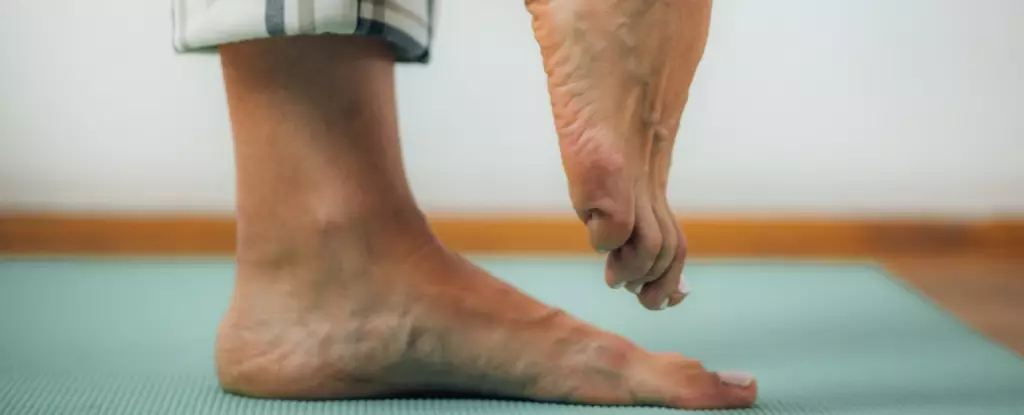In recent years, social media trends have ignited a fascination with quirky tests designed to assess our physical and mental capabilities. Whether it’s attempting to rise from the floor without using hands or balancing precariously on one leg while performing mundane tasks like brushing teeth, these challenges are more than just amusing distractions; they serve as vessels of information about how we age. But the real question remains: do these fun challenges truly reflect the complex tapestry of aging?
Aging is often framed through a dual lens that includes both physical and mental health. Hedonic wellbeing—characterized by pleasure and enjoyment—intertwines with eudaimonic wellbeing, which emphasizes purpose and meaning in life. While the notion of engaging in mindful activities is crucial in this equation, what we often overlook is that aging encompasses a broader spectrum of changes, including physical, cognitive, emotional, and social factors that no single test can effectively encapsulate.
Physical Indicators: The Walk of Life
One of the commonly referenced physical markers of aging is walking speed. A pivotal study linked walking faster than 1.32 meters per second with a lower risk of mortality over the next three years, humorously dubbed “too fast for the Grim Reaper to catch.” However, upon delving deeper into the metrics, it becomes clear that relying solely on walking speed is insufficient. If your gait clocks in at under 0.8 meters per second, it may signal sarcopenia—a decline in muscle mass and strength critical to maintaining functional fitness.
But practically speaking, measuring these indicators at home is a challenge. Most individuals don’t have access to specialized equipment like grip-strength dynamometers that can provide immediate insights. Instead, a practical alternative would be timing how long it takes to stand up and sit down from a chair multiple times—a low-tech but effective measure that your local GP is more likely to accommodate.
Beyond Physicality: The Importance of Mental Health
To derive a deeper understanding of how well you’re aging, a critical area to explore is cognitive health. Mental agility can be assessed through various at-home cognitive fitness tests that examine essential faculties like memory and attentiveness. The trail-making test, which requires individuals to link letters and numbers in a sequential manner, provides valuable insight into cognitive flexibility—the brain’s ability to adapt and switch tasks efficiently.
Engaging in tasks like the Stroop test further challenges one’s cognitive capacity by asking participants to name the color of words printed in conflicting hues. This seemingly simple task reveals how well the brain can filter distractions—a skill that becomes increasingly vital as we navigate the complexities of aging. Additionally, a dual-task challenge, such as walking while counting backward, can expose cognitive load effectively, showcasing how multitasking affects performance.
Tracking Progress: More Than Just Numbers
The importance of tracking improvement over time is not to be underestimated. Cognitive functions may exhibit gradual shifts, more elusive than physical transformations which can be easier to spot. However, developing the discipline to assess oneself through repeated tests each month can act as light to illuminate the path of progress. Despite fluctuations in scores—especially in tasks like balancing on one leg—these are often merely reflections of practice rather than genuine indicators of cognitive decline or improvement.
It’s also critical to note that various improvements are task-specific; excelling in one domain does not necessarily translate into enhanced abilities in another. For example, becoming adept at the trail-making test may bolster specific cognitive pathways but won’t inherently sharpen skills needed for word games like Wordle.
The Holistic Approach: Emotional and Social Dimensions
Age is incredibly nuanced and cannot be captured by just physical measurements or cognitive tests. Emotional wellbeing, measured through tools such as the Scale of Positive and Negative Experience, offers a snapshot of daily emotional states. This short survey explores feelings ranging from joy to frustration, providing a balanced view of both pleasurable and meaningful dimensions in life.
While it may be tempting to reduce aging to numbers on a scale—a stopwatch, a balance score, or a memory retention test—true aging gracefully entails a more profound introspection. Engaging critically with one’s own emotions, body, and values creates pathways for meaningful improvement. The ultimate metrics of aging well pique curiosity beyond physical tests; they evoke a sense of engagement and connection with life itself.
So, while you may find value in standing on one leg or timing your walking speed, remember to engage with your emotional state and the social interactions that shape your life. After all, thriving during the aging process is about fostering a genuine connection with yourself and the world around you. It lies not just in skills or health markers, but in the vibrant feelings of engagement and contentment that shape who you are as you navigate the journey of aging.


Leave a Reply